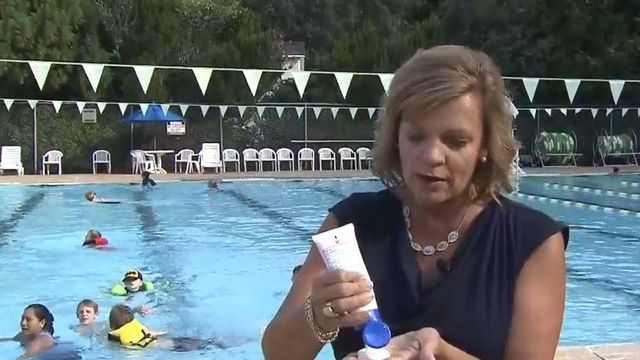Dermatologists: DIY sunscreen can have dangerous consequences
The "DIY" or "Do it yourself" trend continues in popularity, but board-certified dermatologist Jessica Krant said it's not something to consider for sun protection.
Posted — Updated“You're at risk for sunburn in the short term, but in the long term you're really at risk for skin cancer,” Krant said.
Zinc oxide, one of the potential ingredients in homemade sunscreen, is a mineral that can protect skin by deflecting the sun’s UV rays rather than absorbing them the way chemical based sunscreens do.
“In tests of store-bought sunscreens, the ones that contain zinc oxide or titanium dioxide or both as active ingredients have been consistently found to be less effective than those that contain the chemical active ingredients,” Calvo said.
Effectiveness is key, as one bad sunburn can have dangerous outcomes decades down the road.
Avoid the strong mid-day sun, and wear sun protective clothing, hats and sunglasses. When at a pool or the beach, the average adult should use a full ounce of sunscreen, which is around the size of a golf ball.
Sunscreen should also be reapplied every two hours or immediately after swimming, meaning an individual should go through several ounces during a single day spent outdoors.
While you can’t undo the damage, there are steps you can take after a bad sunburn to help it look and feel a bit better while it heals.
A cool or lukewarm shower can help take some of the heat out of sunburned skin. As soon as you get out, while skin is still damp, apply moisturizing lotion with hyaluronic acid, an ingredient that helps bind water to the skin, or aloe.
"Applying the plant's pulp to the sunburned area helps hydrate the skin and calm the inflammation," Calvo said.
If the pain is too much, you can take aspirin or ibuprofen, but avoid the urge to peel your skin or burst any blisters.
"Exposing the affected skin increases the risk of an infection. If a blister bursts on its own, you can use a topical antibiotic, like bacitracin," Calvo said.
Doctors also emphasize the importance of re-applying sunscreen regularly if you’re out for a long time. One application is not enough to avoid getting sunburned.
• Credits
Copyright 2024 by Capitol Broadcasting Company. All rights reserved. This material may not be published, broadcast, rewritten or redistributed.






